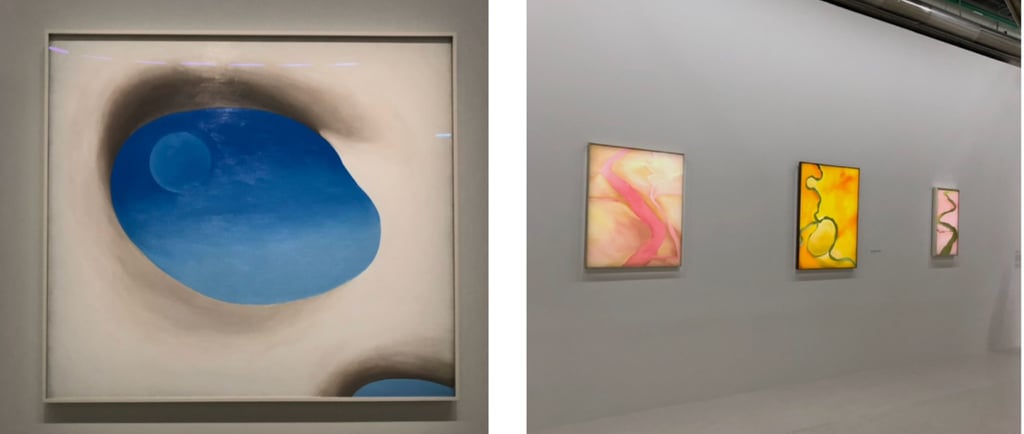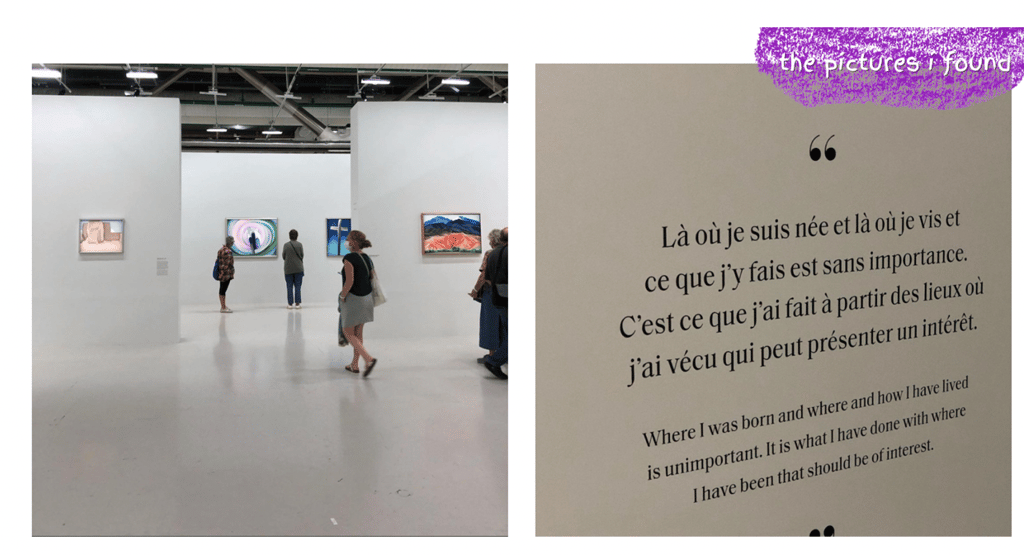The Power of Visual Arts
The Centre Pompidou presented the first retrospective in France of Georgia O’Keeffe (1887 – 1986), featuring around a hundred paintings, drawings, and photographs, providing a comprehensive overview of her artistic journey. Originally featured in The Digital Issue Newsletter 2024.
by nina andre
5/30/20253 min read


"I found I could say things with color and shapes that I couldn't say any other way – things I had no words for"
During my time in art school, I encountered a common struggle: explaining my artworks. A challenge that resonates with many artists. Describing an artwork can feel like trying to decode your personality—who knew it could be so tricky? We're often left wondering, how do we stay unbiased? It's a puzzle, really. We might think people or audiences get the message clear, but there's a whole world of extra information—our thoughts, desires, and emotions—that shapes our creative process. As someone with a strong visual inclination, my journey into the art world initially sprouted from writing. But, I've always seen the world through a visual lens. Working alongside actors and my background in dance and acting have only heightened this perspective, where every person embodies a potential character, nurturing my fascination with human psychology.
What's the point?
Let me paint you a picture. I was flipping through some photos on my phone when suddenly, some pictures fast-forwarding a couple of years ago from a visit to the Centre Pompidou, popped up; it was from Georgia O'Keeffe's retrospective—the first of its kind in France—. From Zurich to Paris, I made the trip because I had to experience it firsthand.
The Centre Pompidou presented the first retrospective in France of Georgia O’Keeffe (1887 – 1986), featuring around a hundred paintings, drawings, and photographs, providing a comprehensive overview of her artistic journey.
In recent years, I've focused on discovering and researching the works of women artists, driven by a deep passion for their diverse expressions across various media. This is not to say that I will avoid art by men, but I have focused particularly on the perspectives of queer and women creators, acknowledging the imbalance in exposure to their art throughout my life.
"I found I could say things with color and shapes that I couldn't say any other way – things I had no words for". – Georgia O'Keeffe
The quote hits, echoing the wise words of a great art mentor I once had: "As an artist, your job is to create, not to explain." Georgia O'Keeffe's take on the power of visual art mirrors my own experiences and, as far as I know, those of most artists. She points out how colour and form can convey abstract emotions beyond words.
O'Keeffe suggests that playing with color and form lets you express abstract concepts and emotions that words can't quite capture. This idea lines up with semiotics, suggesting that visual stuff carries meaning on its own, no words needed; her understanding of language's limits in capturing certain experiences hits me, considering my linguistic journey. Not sure if many people know Spanish is my first language, but the more I try to write in it, the tougher it gets. Somehow, I've lost my flow in that language, which is why I love spending time in Spain; it takes me back to why I fell in love with writing, with words... For the past 10 years or so, I've been living and breathing the art world in English, with a bit of German thrown in. So, reading these lines and feeling understood, it makes sense; language carries so much culture. Words can shape us.
But inside these lines, she also emphasizes the artist's role as a bridge between personal experiences and what others see. Through colour, form, and composition, artists navigate the dance between personal expression and universal resonance, allowing viewers to get into the intangible parts of being human. Because it's about feeling, not just understanding. So, it's okay if you can't explain your art or sum up your personality in some social encounter tonight!

